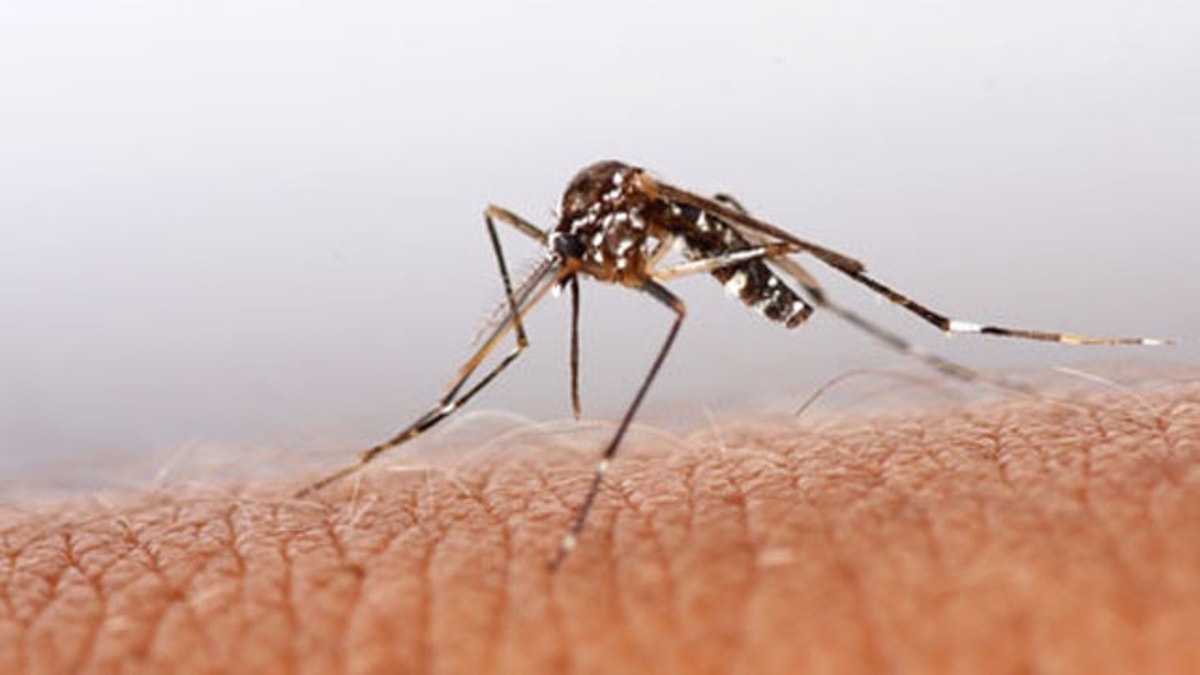
The deadly parasitic disease malaria is made all the more dangerous by the fact that it is easily spread by one of the world’s most abundant insects: mosquitos. And controlling these tiny disease-spreaders can be a difficult endeavor, as they reproduce in large quantities and often develop resistance to insecticides.
But now, researchers from the Harvard School of Public Health (HSPH) and the University of Perugia (UNIPG) may have discovered a new molecular target that could help limit the population of malaria-carrying mosquitos.
According to a new study published in PLoS Biology, egg development in the Anopheles gambiae mosquito – the species most responsible for spreading malaria – relies heavily on the activation of a switch in the female, which is turned on during reproduction by a male hormone called 20-hydroxyecdysone, or 20E. By blocking this switch from activating, the researchers reasoned that this could impair the mosquitos’ ability to reproduce, thus providing a viable target for malaria control.
“We were really intrigued by the fact that Anopheles gambiae male mosquitos produce large amounts of this steroid hormone,” Flaminia Catterucia, associate professor of immunology and infectious disease at HSPH and UNIPG, told FoxNews.com. “The hormone is also produced by the female mosquito after she feeds on people, but in our mosquitos we found that this hormone is produced in very large amounts by the male reproductive tissues. So during sex, males transfer this hormone to the female.”
Catterucia and her team were further interested in this hormone due to the fact that in female Anopheles gambiae mosquitos, egg development is seemingly regulated by mating.
“If a female is a virgin, she can develop eggs, but she develops significantly fewer eggs compared to if she’s mated,” Catterucia explained. “So mating somehow induces egg development, and this is particularly true in natural field populations.”
Given this knowledge, the researchers theorized that the 20E hormone, produced in the male mosquitos’ reproductive tissues, somehow induced egg development in the female during sex.
After analyzing numerous mosquito reproductions in the lab, they found that 20E was, in fact, crucial for egg development, as it strongly interacted with the “Mating-Induced Stimulator of Oogenesis” (MISO) protein in the female mosquito’s reproductive tract. Further examination revealed that the 20E-MISO interaction boosts lipid accumulation in the ovaries, leading to a more rapid and greater production of eggs.
The researchers then used chemical techniques to suppress the MISO protein in female mosquitos, which they found resulted in the reduction of egg development. Given this discovery, Catterucia said the MISO protein could be a potential target for blocking egg production in Anopheles gambiae mosquitos.
“There are two possibilities that I see that would utilize this for malaria control,” Catterucia said. “The first way would be to prevent the formation of this hormone in the male, so you have males who don’t transfer the hormone… The second option is we could target females themselves and prevent the interaction between the (MISO) protein and the hormone, so developing inhibitors of this interaction. Then we’d have females that develop fewer eggs even if they are fully mated.”
Though malaria is not a large threat in the United States, the disease is still one of the deadliest infectious diseases in other parts of the world, most notably in Africa and Southeast Asia. According to the Centers for Disease Control and Prevention, 3.3 billion people live in areas at risk for malaria transmission, and the World Health Organization estimated that in 2010, malaria caused 219 million clinical episodes and 660,000 deaths.
Catterucia said that by stopping the proliferation of malaria-spreading mosquitos, the amount of malaria cases worldwide could drop significantly. She also noted that this technique could bypass a growing problem that is hindering current malaria control methods: insecticide-resistance.
“If you can imagine adding these inhibitors to insecticides, females that are not killed will not be able to develop eggs and will not be able to spread the resistance mechanism to their progeny,” Catterucia said. “…So there will be a double effect on malaria transmission – reducing the number of mosquitos and the spread of resistance.”
